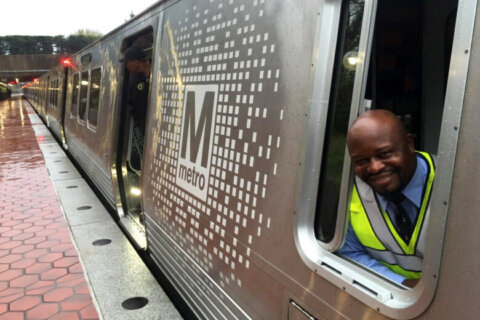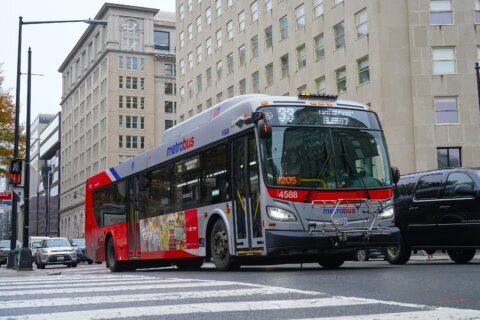WASHINGTON — After the latest incident of a visually impaired person falling onto tracks after mistaking the gap between railcars for an open door, Metro told the Federal Transit Administration Friday that material shortages make it impossible to add chains between new cars any sooner than November 2019.
The transit agency also warned that all riders would see significant rush hour delays if the FTA stands by its safety directive requiring a fix by the end of this year.
In a letter last week, the FTA told Metro that the November 2019 deadline was unacceptable, and that the changes to avoid a “substantial risk of death or personal injury” to visually impaired riders were needed immediately.
If the FTA stands by its threat to require any 7000 Series cars without the fixes to be taken out of service Jan. 1, 2019, Metro said it would have to cut rush-hour service by about 25 percent, to trains every 12 minutes on each line.
Kawasaki, the railcar builder, told Metro it does not have a supplier who can provide the chains any faster than the current schedule. Metro had once promised that installation would be complete months ago, but it now says installation will not even begin until August. Metro expects to install the chains on 50 cars per month, starting with each new pair of cars that is delivered.
Metro’s response letter sent to the FTA Friday said the existing railcar designs are safe and meet all legal standards, including the Americans with Disabilities Act.
“We strongly disagree with the ultimatum contained in the June 22 letter,” Chief Safety Officer Pat Lavin wrote.
If the railcars were taken out of service, Lavin contended, it would lead to “massive traffic congestion as workers and D.C. school children find alternative means to get to work and school.”
“Grounding of the 7000-series railcars would be severely and acutely detrimental to the millions of WMATA riders,” Lavin wrote.
Metro believes that with no specific federal standard, the FTA should not bar the use of the cars.
“This is an industry-wide issue that, I think, needs to be addressed. There should be a consistent standard that we could all meet,” General Manager Paul Wiedefeld said Thursday.
In the incident that prompted the recent safety scramble, Lavin’s letter to the FTA said video footage shows “the customer did not use any universally-accepted protocol for testing for object detection on the floor or doorways prior to stepping off the platform.”
In a second incident, in July 2016, Metro said it did not have video evidence that a man who reported falling between cars onto the tracks had actually done it. He said he pulled himself to safety. Metro said it could only say for sure that his cane was left on the tracks.
“Therefore, there is absolutely no evidence that any individual with visual impairments using widely-accepted means of object detection has ever mistaken the gap between the 7000-series railcars and the platform level as the area of door-opening, nor are there any known incidents demonstrating that the rubber [between car barriers] are more difficult to detect with a cane than chain barriers,” Lavin wrote.
Metro also says “inconsistency” between different types of trains here is no different than the way other systems work across the country.
“Amtrak and some of the other train systems all around have the same issue we do. We are under more scrutiny than everybody else. We’re going to move as quickly as possible to address it and take care of it,” Metro Board Chairman Jack Evans said.
“We are moving as fast as we can to address this.”
Metro acknowledges it discussed the barrier issues with the Accessibility Advisory Committee in 2011.
Current committee Vice Chair Denise Rush said the committee suggested then that the barriers not be changed.
“If the advisory committee has advised, and all we do is advise you, then you really don’t listen to what we advised, now we’re where we are now. That is a concern,” she told the Metro Board Thursday.
The shift away from chains between all railcars had been made with the intent of improving worker safety and making it easier and quicker to rearrange trainsets in rail yards. The removal of chains eliminates the need to lean out and release or reattach the chain connections when cars are decoupled or recoupled.
The FTA will review Metro’s work plans for the fixes and coordinate with Metro on next steps, a spokesperson said.
Metro has now begun public address announcements reminding visually impaired riders to “find the floor” before stepping off of a platform onto what they believe is a railcar by tapping their cane on the inside of the car.






